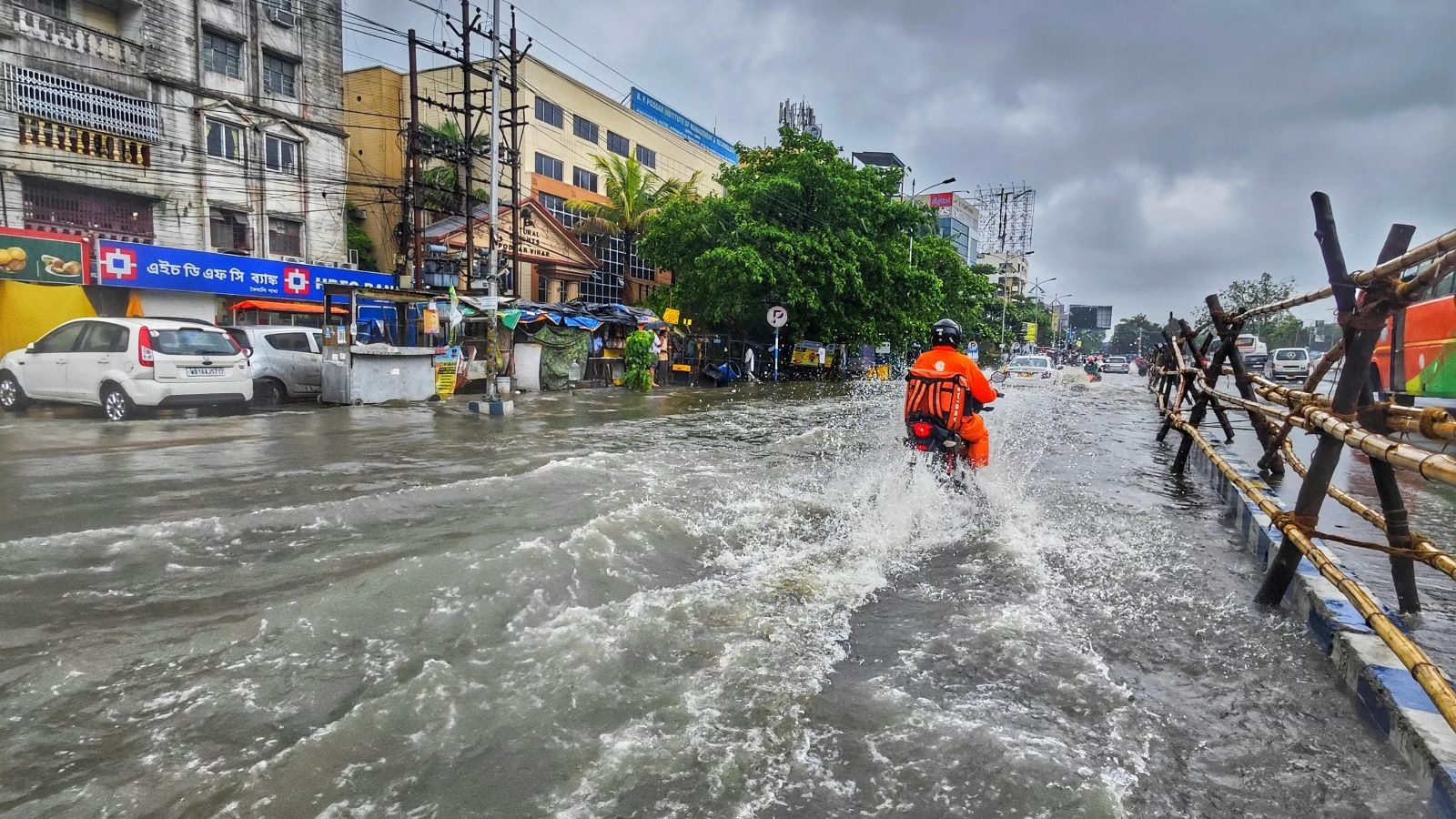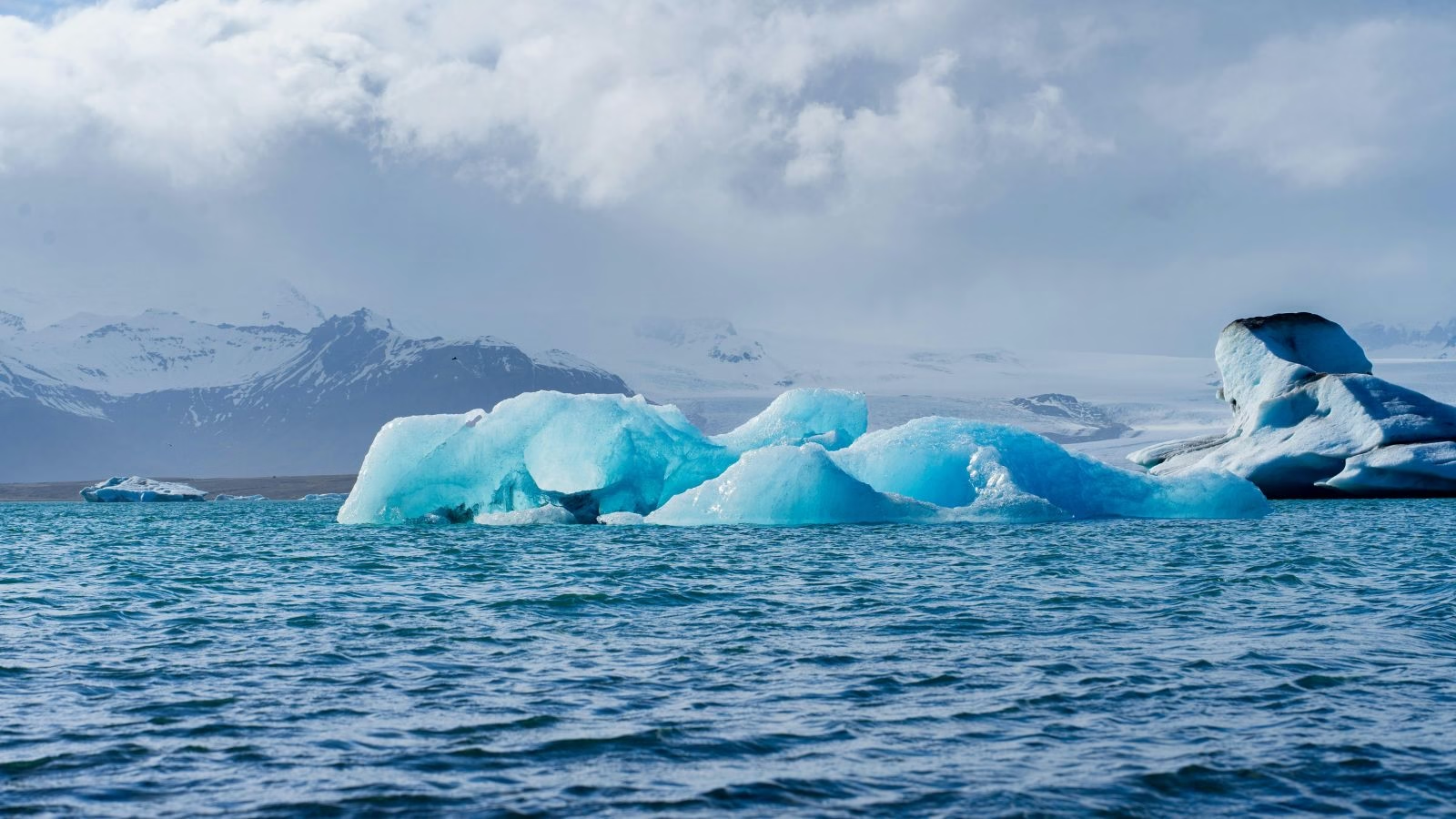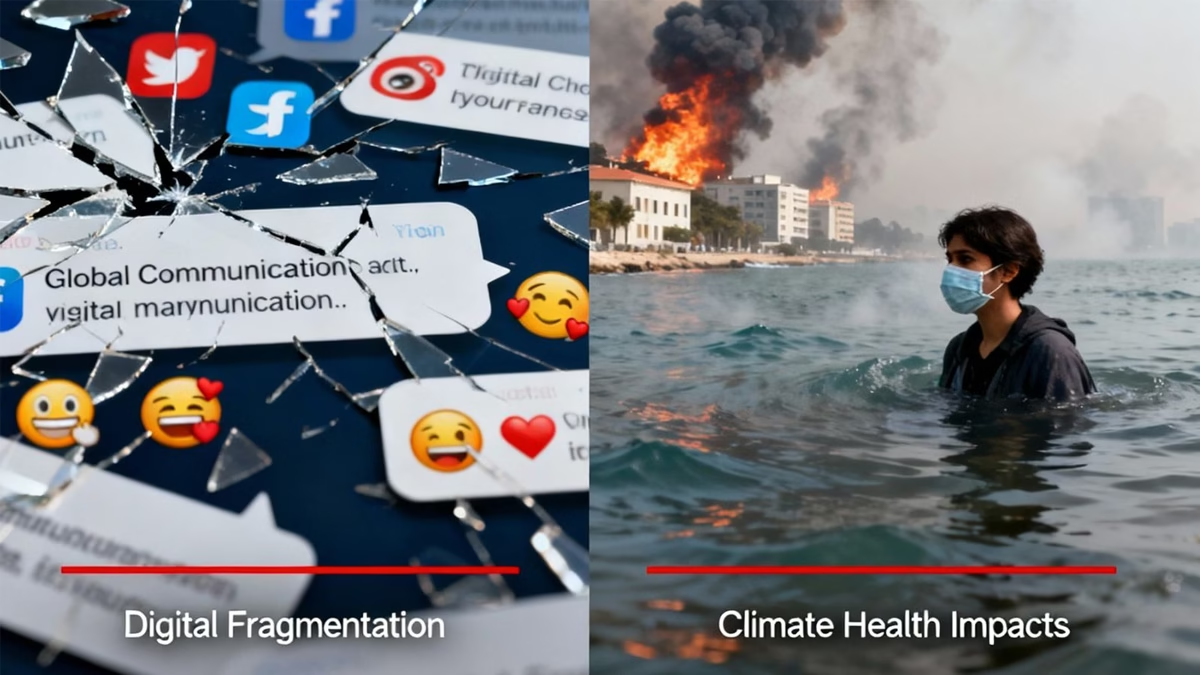Earth
More ‘hazardous’ plastic out there than industries like to acknowledge
A study funded by the Norwegian Research Council, hopes to steer policy makers in the right direction with regards to regulating hazardous plastic chemicals, undetected until now.

The fact that plastic chemicals can be a health hazard, has been known since time immemorial now.
These chemicals in plastic packaging can easily leach into food, water or the environment – affecting both human and ecosystem health.
If none of that’s surprising, take a look at this recent study funded by the Norwegian Research Council. Published ahead of negotiations for the UN treaty on global plastic pollution, environmental scientists were ‘surprised’ after detecting over 4,000 ‘chemicals of concern across all major polymer types’ in a mass sampling of 16,000 plastic chemicals. Moreover, hazard data for more than 10,000 were unavailable, including another 9,000 for which no information was available on their usage.
These plastic chemicals find usage as raw ingredients and additives such as stabilizers and colorants, according to the researchers.
The researchers gathered data from a plethora of scientific reports and national regulatory databases. Although this data was publicly available for long, the recent study is the most rigorous to date, to report hazardous plastic chemicals potentially thriving within our circular economy. Potentially, because the study was limited in the sense it didn’t capture the extent to which people were actually exposed to these plastic chemicals.

Credit: Sophia Marston / Unsplash
But this doesn’t weaken the study’s key claims. In the past, legacy compounds were thought to no longer be used in plastics production. However, the team found conclusive evidence against that belief. Essentially, there’s substantially more hazardous plastic thriving within our circular economy, than industries would care to admit.
However, the chemical industry pounced on the report’s lack of consideration to take exposure to plastic chemicals into account. Kimberly Wise, from the American Chemistry Council, representing US chemical companies, released a statement challenging the interpretation.
“Plastic additives provide many important benefits that enhance the function and durability of plastic products, enabling us to do more with less,” said Wise to Nature. “Unfortunately, today’s report seeks to advance a hazard framework that ignores real-world exposures and paints an incomplete picture for regulators and the public.”
There’s substance to the allegation. At least in the US, there’s the 1976 Toxic Substances Control Act, requiring plastic chemicals to be evaluated for both their hazard and exposure.
However, Wise’s statements didn’t challenge the integrity and the spirit for which the research was done. “We are encouraged that today’s report emphasizes the need for greater transparency,” said Wise. “The International Council of Chemical Associations (ICCA) supports these efforts and is already developing an additives database and risk assessment framework to provide critical information to regulators around the globe.”
However, the researchers noted that more than 3,600 plastic chemicals went unregulated under the Stockholm Convention on Persistent Organic Pollutants. Researchers stress the need for policy makers to act on those plastic chemicals still unregulated.
“The message is very clear,” said lead author Martin Wagner, an environmental toxicologist at the Norwegian University of Science and Technology in Trondheim, Norway, to Nature. “Governments just need to get their act together.” The negotiations in Ottawa, Canada and Busan, South Korea can actually benefit from the results of this report.
Earth
Global Warming Supercharges India’s Monsoon, Drives Rainfall Extremes: New Analysis finds
Global warming is intensifying India’s monsoon, driving unprecedented rainfall extremes and floods across large parts of the country in 2025

India’s 2025 monsoon turned out to be one of the most extreme in recent memory, with nearly half of the country facing abnormal rainfall. An analysis by Climate Trends, based on India Meteorological Department (IMD) data, reveals that global warming is fundamentally reshaping how and where rains fall across the subcontinent.
In the first week of October, EdPublica published a ground report detailing how torrential rains resulted in floods and waterlogging, crippling agriculture in the rural areas of Madhya Pradesh. Now, this localized crisis is mirrored by a far broader pattern of intensifying monsoon extremes revealed in the Climate Trends analysis.
Climate Change Intensifying the Monsoon
“The monsoon is no longer what it used to be — global warming is now the biggest driver,” said Dr. K.J. Ramesh, former Director General of IMD. The Climate Trends report finds that between 2016 and 2025, five out of ten monsoons were above normal, with 2025 marking yet another year of widespread excess rainfall.
Nearly 45 percent of India’s landmass recorded extreme rainfall events this year, highlighting a shift towards shorter, more intense downpours. “The number of rainy days is going down, but the intensity of those showers is far higher,” Ramesh added.
Regional Contrasts
According to Climate Trends’ district-level analysis, northwestern India saw rainfall 27 percent above normal, its highest since 2001. Ladakh and Rajasthan topped the list with record-breaking surpluses of 342 percent and 60–70 percent respectively. Central India, including Gujarat, Maharashtra, and Madhya Pradesh, also registered strong performance.
In contrast, East and Northeast India suffered a 20 percent deficit, marking their ninth below-normal season in a decade. States like Assam, Arunachal Pradesh, and Bihar faced major rainfall shortfalls, while Kerala saw a -13 percent anomaly — a rare dry phase for the usually rain-abundant state.
Floods and Human Toll
The Climate Trends analysis, drawing from IMD’s extreme weather records, reports 2,277 heavy rainfall and flood incidents this year, resulting in 1,528 deaths nationwide. Madhya Pradesh alone recorded 290 fatalities. The Ganga Basin saw 32 of 59 “Highest Flood Level” breaches this monsoon, with August emerging as the most flood-intensive month.
“These Himalayan floods are not typical for the monsoon season,” observed Professor A.P. Dimri, Director of the Indian Institute of Geomagnetism. “They are the result of compounded precipitation — monsoon rains, local orographic effects, and glacial melt acting together.”
The Science Behind a Changing System
Researchers point to several warming-driven factors. The rise in sea surface temperatures over the Arabian Sea and Bay of Bengal has increased atmospheric moisture, fuelling heavier bursts of rain. “The atmosphere now carries more moisture than in earlier decades. Bigger clouds are forming, leading to torrential events,” said Mahesh Palawat, Vice President of Meteorology and Climate Change at Skymet Weather.
Western Disturbances, once confined to winter, are now merging with summer monsoon systems. “They are expanding northward, overlapping with monsoon circulations and enhancing rainfall,” said Dr. Argha Banerjee of IISER Pune.
Himalayan Alarm and Adaptation Need
Rapid glacial melt is compounding the impact of these extreme events. “Snow cover is depleting quickly due to rising temperatures,” Banerjee explained. “This magnifies river responses to sudden rain bursts or cloudbursts.”
The report notes that heavy rainfall events in India have nearly tripled since 1950, and all indicators suggest continued intensification. “These patterns aren’t short-term,” warned Dr. Ramesh. “We’re entering an era of wetter, more erratic monsoons — and adaptation is our only option.”
COP30
Earth Nears Dangerous Tipping Points Amid Rapid Warming, Urgent Action Needed at COP30
The Global Tipping Points Report 2025 warns of imminent climate tipping risks at 1.5°C warming, urging urgent global action at COP30 to prevent irreversible impacts and accelerate sustainable transitions.

As global warming edges perilously close to the 1.5°C threshold, a new scientific report warns that Earth’s vital ecosystems are approaching irreversible tipping points with catastrophic implications for billions of people worldwide. Released ahead of the COP30 climate summit in Belém, Brazil, the ‘Global Tipping Points Report 2025‘ issued by leading researchers from the University of Exeter and international partners reveals an urgent call for unprecedented global cooperation to prevent cascading system collapses.
“Already at 1.4°C of global warming, coral reefs face unprecedented dieback, while polar ice sheets threaten multi-metre sea level rise,” states the report. “The Amazon rainforest risks widespread dieback below 2°C, jeopardizing biodiversity and the livelihoods of over 100 million people.” The report highlights the intertwining threats posed by climate change, deforestation, and feedback loops that amplify warming risks, including potential collapse of the Atlantic Ocean circulation that governs weather patterns across Europe and Africa.
Urgency is paramount. The report emphasizes that exceeding 1.5°C—even briefly—significantly increases the odds of triggering multiple tipping points with cascading effects that disrupt food security, water availability, and economic stability globally. Authors warn that waiting until tipping points are crossed before acting is a grave mistake; instead, immediate measures to halve global greenhouse gas emissions by 2030 and achieve net zero by 2050 are essential.
The report also highlights emerging positive tipping points fueled by rapid adoption of solar power, electric vehicles, and nature-positive initiatives as crucial leverage points for accelerating sustainable transformation. “Positive tipping points can cascade across sectors, driving exponential change,” the researchers note, urging coherent policy mandates, finance mobilization, and inclusive governance to unleash these potentials.
In a message from Brazil, host of COP30, the report’s foreword calls for shifting the narrative from fear to hope: “We must prevent irreversible harm but equally trigger positive tipping points that propel societies towards low-carbon and climate-resilient development.” This vision centers the Global South’s pioneering efforts in regenerative agriculture, forest restoration, and climate finance innovation.
Critical governance challenges remain as the report stresses the need for anticipatory, justice-centered, multi-scale approaches linking human rights with climate action. International cooperation, transparent monitoring, and empowering Indigenous peoples and local communities stand out as pillars to navigate this precarious climate crossroads.
COP30 represents a decisive moment. The report concludes, “The time to act is now. United, we can reverse dangerous climate trajectories and trigger a global wave of renewal. Let us change by choice, together.”
Earth
Global Report Reveals Planetary Health Communication Crisis Fuelled by AI and Misinformation
Global report reveals planetary health communication crisis fuelled by AI misinformation threatens climate action and vulnerable communities.

A new report launched yesterday at the Planetary Health Annual Meeting in Rotterdam has exposed a critical failure in global health communication that experts warn could undermine humanity’s response to interconnected climate and health crises.
The comprehensive study, titled “Voices for Planetary Health: Leveraging AI, Media and Stakeholder Strengths for Effective Narratives to Advance Planetary Health,” represents the first systematic mapping of how planetary health issues are communicated worldwide. Developed by the Sunway Centre for Planetary Health at Sunway University and implemented by Internews, the research reveals that communication—not scientific knowledge—has become the critical bottleneck preventing effective action on environmental health emergencies.
Fragmented Messages
The study’s findings paint a troubling picture of the global communication landscape. Despite mounting scientific evidence about the interconnected health threats from climate change, biodiversity loss, and pollution, public discourse remains severely fragmented and increasingly vulnerable to misinformation.
“We know the science. What we lack is a shared story that resonates across communities, cultures, and decision-makers,” said Prof. Dr. Jemilah Mahmood, Executive Director of the Sunway Centre for Planetary Health.

The research, which analyzed 96 organizations and individuals across nine countries through in-depth interviews and social media analysis, found that planetary health communication efforts are often siloed within specific disciplines, limiting their reach and effectiveness. Many initiatives depend on short-term projects with minimal resources, leaving little capacity to build sustained narratives that could drive meaningful policy change.
AI: Double-Edged Sword
Perhaps most concerning is the report’s revelation about artificial intelligence’s dual role in planetary health communication. While AI presents opportunities for expanding access to reliable information and supporting multilingual communication, it also poses significant risks for spreading misinformation and deepening inequality.
Recent studies have documented how generative AI can be weaponized to create climate misinformation through bot-generated tweets mimicking climate deniers, deep-fake images of environmental activists, and sophisticated long-form content espousing false narratives. The technology can also amplify existing biases, with research showing that AI systems often privilege Western knowledge over Indigenous perspectives, potentially contributing to “global conservation injustices”.
The environmental cost of AI itself compounds the problem. Data centres now consume around 1.5% of global electricity, with AI-focused facilities requiring as much power as energy-intensive aluminium smelters. Training large language models like GPT-4 requires three to five times more energy than GPT-3, which already consumes enough electricity to power 120 American homes for a year.
Marginalized Communities Bear the Heaviest Burden
The communication crisis disproportionately impacts the world’s most vulnerable populations—precisely those most affected by planetary health emergencies. The report emphasizes that marginalized communities, including people of colour, low-income groups, and Indigenous peoples, face the greatest challenges in both accessing reliable health information and adapting to climate-related health threats.
Multiple studies confirm that racially and socioeconomically marginalized communities in the United States experience greater impacts from climate-related health events, including extreme heat, flooding, and respiratory illnesses. Children of colour are particularly vulnerable, experiencing disproportionate health impacts from climate exposures compared to white children.
The communication barriers compound these vulnerabilities. Scientific jargon makes planetary health concepts inaccessible to general audiences, while language delivery challenges—including complex English or lack of translation—further limit reach to non-English speaking communities.
Despite the communication challenges, the report identifies young people as both critical audiences and powerful communicators, particularly through digital platforms. Youth activists are increasingly using social media to drive environmental awareness and policy pressure, though they face significant obstacles including algorithmic bias and platform censorship concerns.
The research found that LinkedIn was most effective for professional audiences, while Instagram and TikTok showed promise for youth engagement, despite trust issues on some platforms. However, maintaining consistent and meaningful social media presence remains challenging for many organizations working with limited resources.
Strategic Solutions
To address these critical communication failures, the report proposes a revolutionary two-pronged strategy combining “strategic communication” to influence policy with “democratic communication” to foster community-level dialogue.
The approach rests on six core principles: ensuring marginalized voices shape the agenda; presenting planetary health as an integrated framework rather than disconnected crises; building bridges between disciplines and geographies; anticipating backlash and protecting communicators; tailoring messages to cultural contexts; and working within existing cognitive frameworks.
The research team has developed practical playbooks for different stakeholder groups and monitoring frameworks to track communication effectiveness—tools they argue could be transformative if adopted widely across the planetary health community.
“Communication is not just a tool; it is a catalyst for change. By speaking with courage, coherence, and compassion, and equipping all actors to tell inclusive stories, we can turn knowledge into action and ensure no voice is left behind,” said Jayalakshmi Shreedhar of Internews.

The report’s launch comes at a critical moment, as policy rollbacks in major economies threaten to undermine decades of environmental progress. The study documents how recent reversals, including the United States’ withdrawal from climate agreements and defunding of health agencies, have weakened the systemic response needed to address planetary health crises.
With six of nine planetary boundaries already crossed and climate-related health impacts accelerating globally, experts warn that the window for effective communication and coordinated action is rapidly closing. The success of humanity’s response to interconnected environmental and health crises may ultimately depend on our ability to tell a coherent, compelling story that mobilizes action across all levels of society.
-

 Space & Physics5 months ago
Space & Physics5 months agoIs Time Travel Possible? Exploring the Science Behind the Concept
-

 Know The Scientist5 months ago
Know The Scientist5 months agoNarlikar – the rare Indian scientist who penned short stories
-

 Society4 months ago
Society4 months agoShukla is now India’s first astronaut in decades to visit outer space
-

 Earth5 months ago
Earth5 months agoWorld Environment Day 2025: “Beating plastic pollution”
-

 Society4 months ago
Society4 months agoAxiom-4 will see an Indian astronaut depart for outer space after 41 years
-

 Society6 months ago
Society6 months agoRabies, Bites, and Policy Gaps: One Woman’s Humane Fight for Kerala’s Stray Dogs
-

 The Sciences4 months ago
The Sciences4 months agoHow a Human-Inspired Algorithm Is Revolutionizing Machine Repair Models in the Wake of Global Disruptions
-

 Space & Physics3 months ago
Space & Physics3 months agoJoint NASA-ISRO radar satellite is the most powerful built to date






















